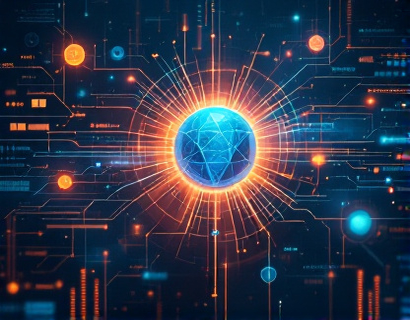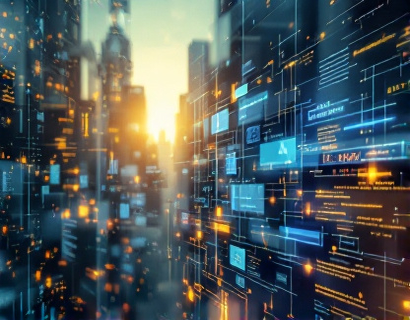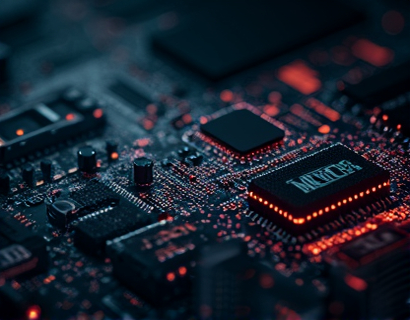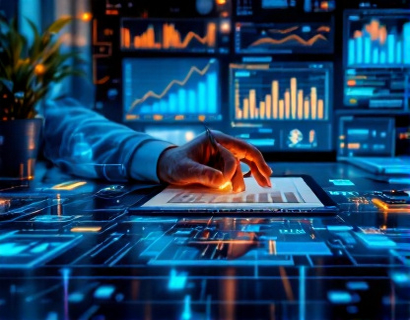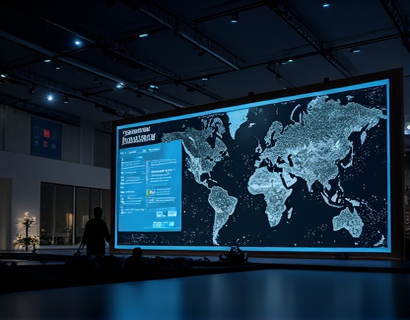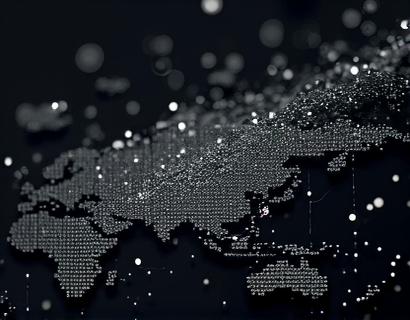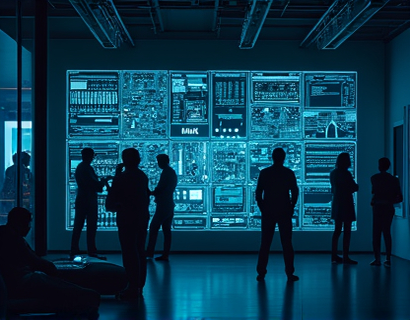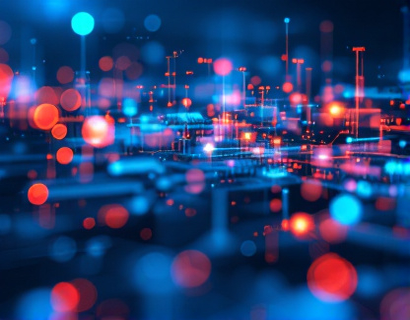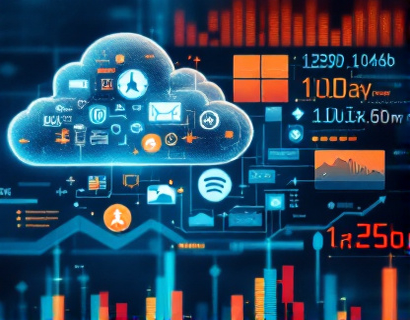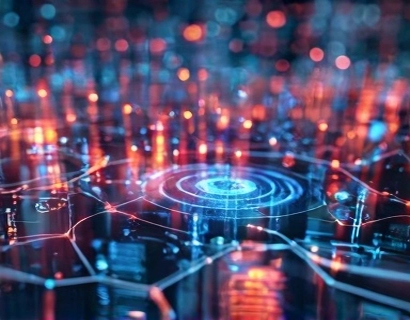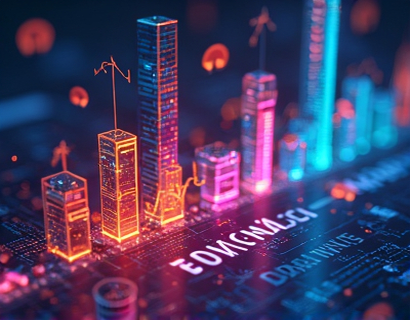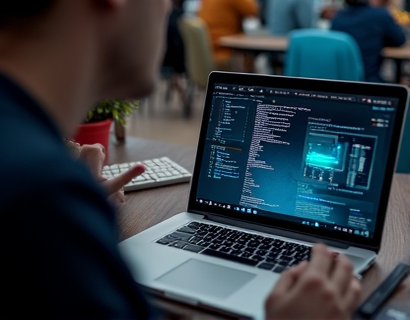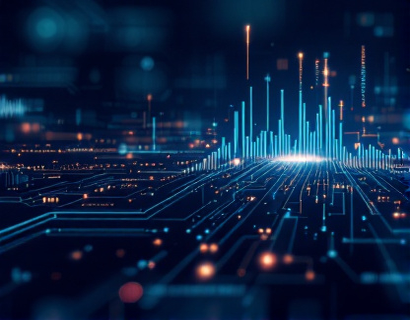Decentralized Productivity Elevated: Harnessing AI and Crypto for Next-Gen App Innovation
The intersection of cryptocurrency and artificial intelligence (AI) is giving birth to a new era of decentralized applications that promise to revolutionize productivity and user experience. This transformative blend offers a glimpse into a future where traditional centralized models are being replaced by more efficient, secure, and user-centric decentralized ecosystems. For tech-savvy individuals, AI enthusiasts, and early adopters of digital solutions, understanding the potential of these merging technologies is crucial. This article delves into how the combination of AI and cryptocurrency is reshaping the landscape of app development and productivity tools, focusing on the next generation of decentralized app ecosystems and their capacity to redefine modern workflows.
The foundation of this revolution lies in the unique properties of blockchain technology, which underpins cryptocurrency. Blockchain's inherent characteristics of transparency, immutability, and decentralization provide a robust framework for building trust and security in digital interactions. When combined with AI, which excels in processing vast amounts of data to provide insights and automate tasks, the result is a powerful synergy that can significantly enhance productivity.
Enhanced Security and Trust
One of the primary advantages of decentralized applications (dApps) is the enhanced security they offer. Traditional applications store user data on centralized servers, making them vulnerable to hacks and data breaches. In contrast, dApps store data across a network of nodes, making it extremely difficult for malicious actors to compromise the system. This decentralized storage, coupled with blockchain's cryptographic security, ensures that user data is protected and transactions are tamper-proof.
AI plays a crucial role in fortifying this security by enabling advanced threat detection and response mechanisms. Machine learning algorithms can analyze patterns and identify anomalies in real-time, allowing for proactive measures to be taken against potential security threats. This combination of blockchain and AI creates a highly secure environment for users, fostering trust and encouraging broader adoption of decentralized applications.
Improved User Privacy
Privacy is another area where the fusion of AI and cryptocurrency brings significant benefits. Traditional apps often require users to share personal information, which can be misused or exposed in data breaches. Decentralized apps, on the other hand, can leverage zero-knowledge proofs and other privacy-preserving techniques to allow users to verify information without revealing sensitive data. AI can further enhance this by enabling sophisticated encryption methods and secure multi-party computations, ensuring that user privacy is maintained at all times.
The result is a user experience where individuals can work and collaborate without the constant fear of their data being compromised. This level of privacy not only attracts more users but also opens up new possibilities for applications in fields such as healthcare, finance, and personal productivity, where data sensitivity is paramount.
Increased Efficiency and Automation
AI's ability to automate repetitive and complex tasks is a game-changer for productivity. In a decentralized ecosystem, AI can be deployed to manage and optimize various processes, from data analysis to content creation. For instance, AI-driven bots can handle customer support, schedule meetings, and even assist in content moderation, freeing up human resources for more strategic tasks.
Smart contracts, a key component of blockchain technology, can be programmed with AI to execute tasks automatically when certain conditions are met. This automation reduces the need for intermediaries, speeds up processes, and minimizes human error. In the context of productivity tools, this means that workflows can be streamlined, and tasks can be completed more efficiently, leading to higher overall productivity.
Personalized User Experiences
AI's strength in data analysis and pattern recognition can be harnessed to create highly personalized user experiences. In a decentralized app ecosystem, AI can analyze user behavior and preferences to tailor applications to individual needs. This personalization extends to everything from user interfaces to content recommendations, ensuring that each user has a customized and optimized experience.
For example, a decentralized productivity platform could use AI to monitor a user's work patterns and suggest the most effective tools and workflows based on their habits. This level of personalization not only enhances user satisfaction but also increases the effectiveness of the tools, leading to better outcomes and higher user retention.
Decentralized Marketplaces and Incentive Structures
Decentralized applications are not just about individual tools; they are also about creating entire ecosystems where users can interact, collaborate, and monetize their contributions. AI can enhance these ecosystems by optimizing marketplaces and incentive structures. For instance, AI can analyze market trends and user behavior to dynamically adjust token prices, ensuring fair compensation for contributors and maintaining the health of the ecosystem.
Moreover, AI can help in identifying and rewarding valuable contributions, such as high-quality content or effective problem-solving. This creates a more engaging and rewarding environment for users, encouraging active participation and fostering a sense of community. The combination of blockchain's transparency and AI's analytical capabilities ensures that the incentive structures are fair, transparent, and effective.
Scalability and Interoperability
One of the challenges facing decentralized applications is scalability. As the number of users and transactions grows, traditional blockchain networks can become congested, leading to slower transaction times and higher fees. AI can play a crucial role in addressing this issue by optimizing network performance and predicting bottlenecks before they occur. Machine learning algorithms can analyze network data to identify patterns and suggest improvements, ensuring that the ecosystem remains efficient and responsive.
Interoperability is another key aspect where AI can make a significant impact. Decentralized applications often operate on different blockchain platforms, each with its own set of protocols and standards. AI can facilitate seamless communication and data exchange between these platforms, creating a more integrated and user-friendly experience. By breaking down silos and enabling cross-chain interactions, AI helps build a more cohesive and versatile decentralized ecosystem.
Future Prospects and Challenges
The potential of decentralized apps enhanced by AI is vast, but realizing this potential comes with its own set of challenges. One of the primary hurdles is the technical complexity involved in integrating AI with blockchain technologies. Developers need to possess a deep understanding of both domains to create robust and efficient applications. Additionally, the regulatory landscape for decentralized technologies is still evolving, and navigating these regulations can be challenging.
Another challenge is the user adoption curve. While the benefits of decentralized and AI-enhanced apps are clear, convincing users to switch from familiar centralized systems requires education and demonstration of tangible value. Building trust and demonstrating the practical advantages of these new technologies will be crucial for widespread adoption.
Despite these challenges, the future looks promising. As more developers and organizations recognize the potential of decentralized AI-powered applications, we can expect to see significant advancements in this space. The next generation of apps will likely be more secure, private, efficient, and personalized, fundamentally changing how we work and interact with technology.
In conclusion, the convergence of AI and cryptocurrency is paving the way for a new era of decentralized productivity tools. By leveraging the strengths of both technologies, we can create applications that are not only more secure and private but also more efficient and user-friendly. As this ecosystem continues to evolve, it holds the promise of redefining modern workflows and enhancing productivity in ways we are only beginning to imagine.





